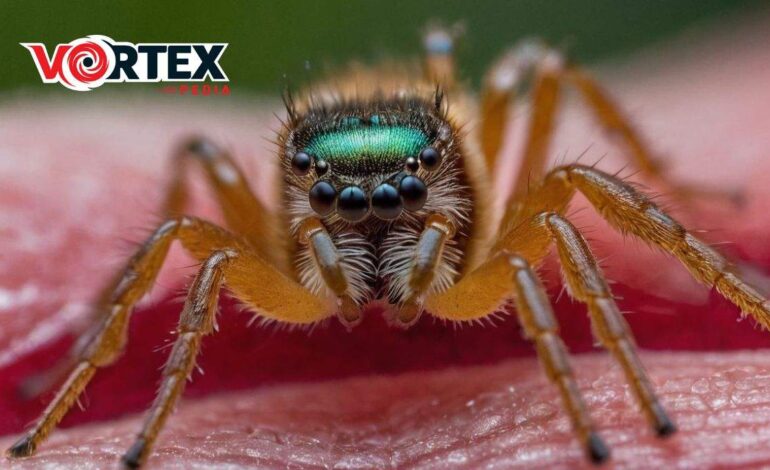
What is Zoonoses | The Emergence of a New Virus
In 2019, a virus jumped from its natural animal host into humans, and life as we know it changed. With this change came questions: What happened? How did we get here? Can we prevent this from occurring again? We do not have all the answers to these questions.
The Warning Signs
But one thing we do know is that the emergence of COVID-19 did not come as a surprise to scientists who have been working on emerging infectious diseases. This will not be the last. So, why should we expect more infectious diseases? In the last few decades, there’s been an increase in the number of new diseases, with 60 percent of these diseases being zoonoses.
Understanding Zoonoses
What is a zoonosis? A zoonosis is a disease that is caused by a pathogen that can affect both humans and animals. Some well-known zoonoses are diseases like Ebola, rabies, and avian influenza, also known as bird flu. Over 70 percent of zoonoses come from wildlife. But why wildlife? One of the reasons is an increasing population with an increasing demand for resources. This has meant that humans are now encroaching into areas that were previously uninhabited, coming into contact with wildlife and the diseases they carry.
WHO’s Priority Diseases
The World Health Organization regularly releases a list of priority diseases for research and development based on their potential to cause a public health emergency. All the diseases on this list are zoonoses. Included in the current list, among others, are COVID-19, Ebola, Zika, and Disease X. Disease X is defined as a currently unknown disease with the potential to cause an international epidemic. In 2019, Disease X was COVID-19, a zoonosis.
The Importance of Zoonoses
So, why are zoonoses important? They have widespread effects with both direct and indirect costs. An example of a direct cost to humans is ill health and premature death. Pre-COVID, it was estimated that annually 2.5 billion cases of disease and 2.7 million deaths are due to zoonoses. When we look at indirect costs, we can consider what is happening right now with COVID-19. Economies are in recession, global value chains have been disrupted, and there is reduced international demand for goods. On a personal level, we have all been affected by COVID-19 in one way or another, whether through the loss of a loved one, the inability to see our friends and relatives, or the psychological impacts this pandemic is having on our children.
Mitigating Zoonoses and Preparing for Disease X
What can we do to mitigate the effects of zoonoses and prepare for Disease X? We can use the One Health approach. The One Health approach integrates human health, animal health, and environmental health. In terms of zoonotic diseases, it looks at all the factors that can lead to the emergence of a disease or that can increase the threat of a disease.
The One Health Approach in Action
Let’s look at an example of where the One Health approach was used successfully. In 1997, there was an outbreak of avian influenza, also known as bird flu, in Hong Kong. Authorities devised a One Health approach to the disease that went on to be used in other emerging infectious disease outbreaks. They looked at poultry production and marketing systems, as well as sick and healthy poultry and wild birds, to determine the roots of exposure to the virus. With this knowledge, they were then able to design targeted responses to prevent further transmission of the disease in humans and poultry.
Surveillance and Education
We can look at another example of how the One Health approach can be used. Normally, before outbreaks of Ebola in humans, there are large outbreaks in wildlife populations, particularly non-human primates like gorillas and chimpanzees. What normally happens is that hunters come across the carcasses of these animals that have died from Ebola. When they butcher the carcasses, they get infected and serve as a primary source of infection in their communities. In this case, the One Health approach could involve regular surveillance of wildlife populations for disease, education of hunters on the risks of butchering carcasses of animals they have found dead, and looking into alternative avenues of livelihood for these hunters.
Predicting Future Outbreaks
Another example involves mosquito-borne infections like Zika, Rift Valley fever, or dengue. We could use the One Health approach to predict future outbreaks by using meteorological data like temperature and rainfall to determine when the environment will be more suited for mosquito populations.
The Multi-Sectoral Approach
From these examples, we see that the One Health approach is a multi-sectoral and multi-disciplinary approach. One Health is not a new concept; it has been around in various forms since the 19th century. But to this day, many just pay lip service to it. As a veterinarian working with zoonoses, I see the need for the holistic, integrated approach that One Health offers. My veterinary faculty has always been a champion of One Health, but outside veterinary circles, it seems like One Health is an option and not a necessity.
Integrating One Health
So, how can we ensure that One Health is integrated into all levels of our health response? It starts with you and me. We need to educate each other on the use of One Health to mitigate the effects of zoonoses or prevent zoonoses. We also need to understand that some activities, even though seemingly unrelated to health, can actually increase the risk of zoonoses. For example, wildlife trade, encroachment into previously uninhabited areas, and natural phenomena like flooding.
The Role of Local Authorities
Our local authorities, lawmakers, and traditional leaders all need to be involved in preventing or mitigating the effects of such activities and natural phenomena. Traditional leaders are crucial because, as I mentioned earlier, over 70 percent of zoonoses come from wildlife. Where do we find this wildlife? Outside the urban settings, in areas governed by these traditional leaders.
Advocating for Policy Integration
We also need to advocate for One Health to be integrated into national policy. This national policy should dictate an integration of line ministries in response to zoonoses, for example, the Ministry of Livestock and Fisheries, Ministry of Health, Ministry of Mines, and so on. There needs to be an agency that oversees this, whose mandate is to ensure that all stakeholders are involved in the One Health response. This agency should also conduct and support research into zoonoses, looking into potential spillover. Additionally, this agency should bridge the gap between human, animal, and environmental health research and government policy.
Preparing for the Future
So, what will happen the next time we have Disease X? The way we prepare for it now will determine its severity. We all have a role to play. One Health integrates human health, animal health, and environmental health. If used properly, it will ensure that the next time a disease jumps from its animal host into humans, vortexpedia will be ready with the answers. Thank you!








